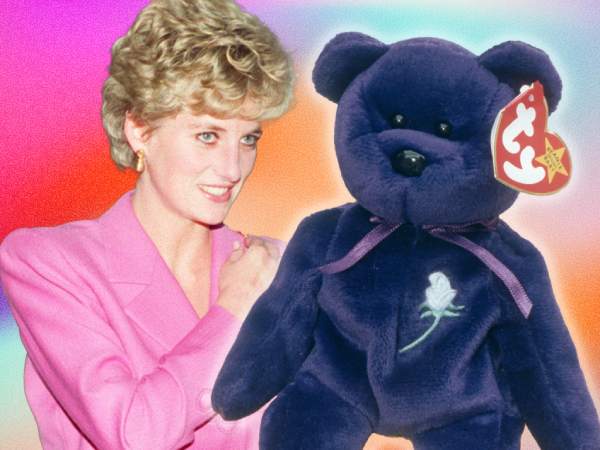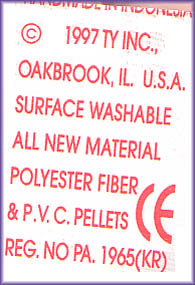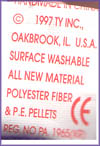I’m sure a lot of you want to know how much your Princess Beanie Baby is worth…
Welcome to our comprehensive guide covering everything you need to know about the Princess Beanie Baby. Since its release, Princess has captured the hearts of collectors worldwide, becoming a symbol of nostalgia and fascination.
In this article, we’ll delve into the fascinating history behind Princess, explore its various editions, discuss key factors affecting its value, and provide essential tips for both seasoned collectors and newcomers alike. Whether you’re a passionate Beanie Baby enthusiast or simply curious about this iconic plush toy, join us as we unravel the captivating story of Princess Beanie Baby.

“Diana is my favorite royal,” said a collector from Idaho, reminiscing about a memorable trip to a Hallmark store. “When that Beanie came out, I literally fought an old lady to get it. She was reaching for it, but because I was younger and faster, I grabbed it first. If it had been anything else, I might have let her have it, but not this one. This one was mine.”
Ty Inc., the creator of Beanie Babies, made headlines in October 1997 when they announced the creation of a royal-themed doll, with proceeds designated for the Diana, Princess of Wales Memorial Fund.
The plush toy featured deep purple fur, reminiscent of royalty, adorned with a delicate white rose in the upper left corner. A poignant poem on the tag encapsulated Diana’s impactful life: “Like an angel she came from heaven above; she shared her compassion, her pain, her love; she only stayed with us long enough to teach the world to share, to give, to reach.”
But it was the rumored scarcity that caused collectors to go crazy for Princess.
Retailers were apparently limited to ordering only 12 Princess Bears per store and it was unknown whether they would be immediately retired or if they’d continue to be manufactured. Since this was a special release, a lot was unknown and kept private intentionally to drive scarcity and interest.
Princess wound up being one of the most overly produced Ty Beanie Babies of all time and is probably the most common Beanie you’ll still find nowadays.
On October 26th, 1999, in London, Ty Inc.’s executive VP and CFO, Michael W. Kanzler, delivered a significant contribution of $1,802,250.27 to the Diana Princess of Wales Memorial Fund. This donation marks yet another stride in Ty Inc.’s longstanding support for the fund, with cumulative contributions exceeding $20,890,858.51 since 1998. The essence of Ty Inc.’s commitment lies in dedicating all profits from the original Princess Beanie Baby and Princess Beanie Buddy sales to further the noble causes championed by the late Princess Diana.
Though the iconic Princess Beanie Baby debuted on October 29th, 1997, and retired on April 13th, 1999, its allure persists among collectors. Following its success, Ty Inc. introduced the larger plush toy, Princess Beanie Buddy, in April 1999. Through grants to charities affiliated with Princess Diana, Ty Inc. ensures its contributions directly benefit those in need. Mr. Kanzler’s upcoming trip to London in late October will afford him the opportunity to witness firsthand the impact of Ty Inc.’s support, as he visits the Diana Princess of Wales Memorial Fund and the Osteopathic Centre for Children’s Hospital, a charity close to the late Princess’s heart.
How Much Is My Princess Ty Beanie Baby Worth?
If you’re excited about stumbling upon a Princess Diana Beanie Baby listed on eBay for tens or even hundreds of thousands of dollars, I hate to be the bearer of bad news. The reality is, your Beanie Baby likely isn’t worth more even $1 – unless you have some rare variations I’ll discuss below.
Because they produced so many of these and for so long (2+ years), there are just way, way too many of these out there to hold any collectible / resale value.
Still skeptical? Take a look at the sold items on eBay. The value of any collectible item is ultimately what someone else is willing to pay for it, and the prices on eBay don’t lie. I’m sorry if this isn’t the news you were hoping for, but hey, at least it was fun in the 90s right?
Princess Beanie Baby Variations
There are a few main factors that determine the value of Princess variations: the type of pellets, the country of production, and variations in tags.
PVC vs PE Pellets
When it comes to Princess, the key factor is what’s inside her—those stuffing or pellets. In the realm of collectibles, 1st Editions usually hold higher value. But here’s the catch: unlike many collectibles, these Beanie Babies weren’t labeled with editions. So, how do we distinguish the originals?
This question has stirred up a lot of debate. Ty Inc. hasn’t released their official records, nor have they made any official statements about the Princess Bear controversy. However, experts in the world of Beanie Babies widely believe that PVC pellets preceded PE pellets. Somewhere in the process of creating the globally renowned Princess Bear, Ty made the switch from PVC to PE pellets for all Beanie Babies.
If you’re curious about which version you own, check the pellet type noted on the tush tag of each stuffed animal. Since the initial batch of bears used PVC pellets, your Bear will fetch a higher price if the tush tag indicates PVC pellets.


Indonesia vs China
The story of Princess Beanie Babies is riddled with debates and mysteries. One of the biggest questions surrounds where they were manufactured: China or Indonesia? Unfortunately, Ty Inc. has kept their production records under wraps, leaving us in the dark. Despite this lack of transparency, recent sales data suggests that the Indonesian version tends to fetch higher prices. Of course, it’s important to remember that the value of your Princess Bear ultimately boils down to what someone is willing to pay for it.
What’s driving this price difference? Well, it seems that there are fewer Indonesian bears circulating in the market compared to their Chinese counterparts. This scarcity factor makes the Indonesian version more sought after, thus driving up its price tag. So, if you happen to have a Princess Bear in your collection, take a peek at the tush tag. Indonesia is the variation worth something.
The Princess bears manufactured in Indonesia were primarily intended for the Canadian and European markets. This raises an intriguing possibility: that production of Princess bears in Indonesia commenced concurrently with production in China. If this were the case, it could potentially elevate Princess bears made in Indonesia with no-space swing tags and P.V.C. tush tags to “first edition” status.
Princess bears made in Indonesia may feature either an ST #2 (which is identical to ST #1, except for the addition of “Handmade in Indonesia” printed on the inside bottom left of the tag) or the subsequent ST #3. It’s important to note that the text on the right side of ST #3 includes a line space above “DIANA, PRINCESS OF WALES”.
Space vs No Space Hang Tag
The initial version of Princess Beanie Baby sports a distinctive swing tag. What sets it apart is that the text on the right side doesn’t have a line space above “DIANA, PRINCESS OF WALES”. On the left side, it clearly states “Handmade in China”. This particular swing tag is referred to as ST #1.
These swing tags are often categorized by collectors as either “space” or “no-space”. This refers to the last four lines of text on the right inside of the swing tag. The “no-space” swing tag was predominantly attached to Princess bears produced in China during the initial production phase, and occasionally during some of the production in Indonesia. It’s worth noting that a “first edition” Princess MUST have the “no-space” swing tag attached.
The Most Valuable Princess Beanie Baby Variation
The only way your Princess Beanie Baby has any value is if it has ALL 4 of these variations:
- No Space Hang Tag AND
- Canadian Tush Tag AND
- Made In Indonesia AND
- PVC Pellets
This variation is worth $150-200.
